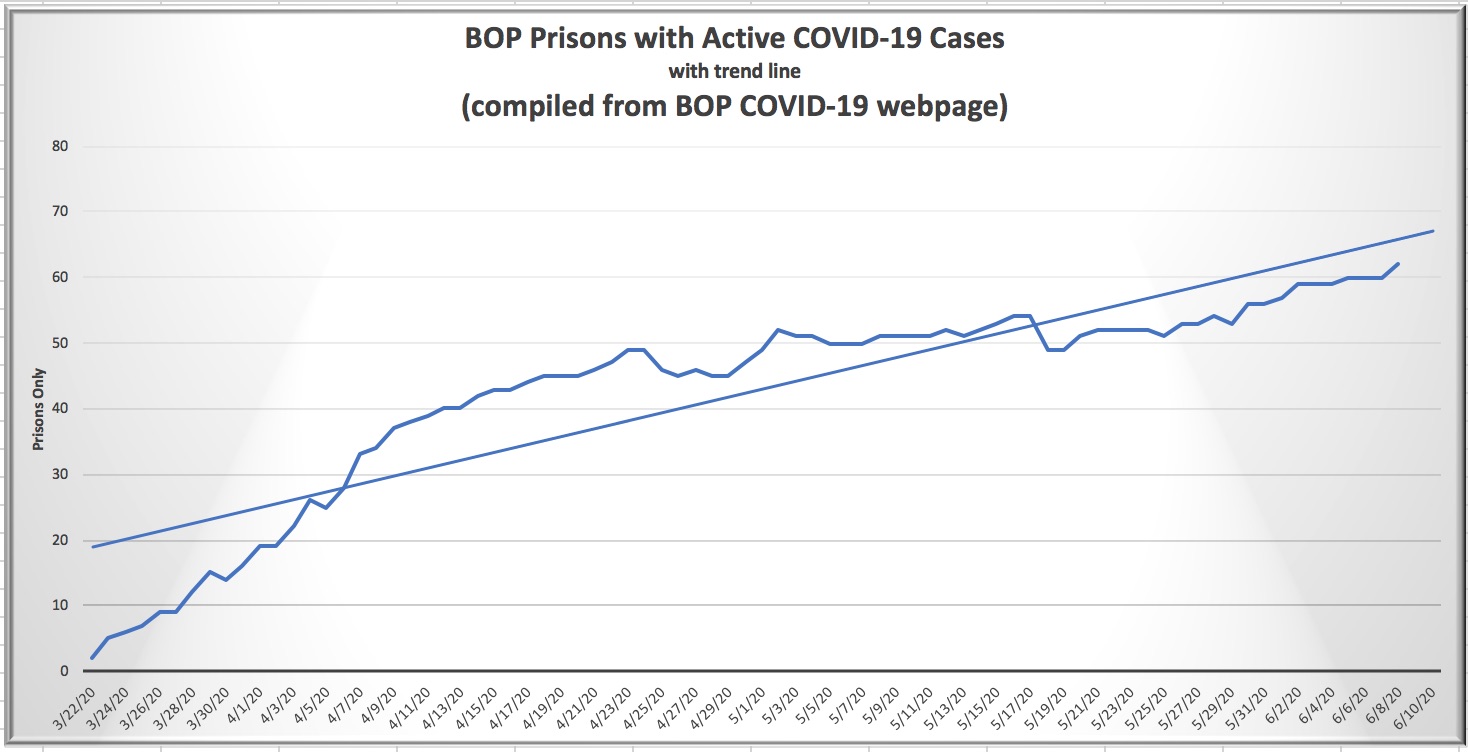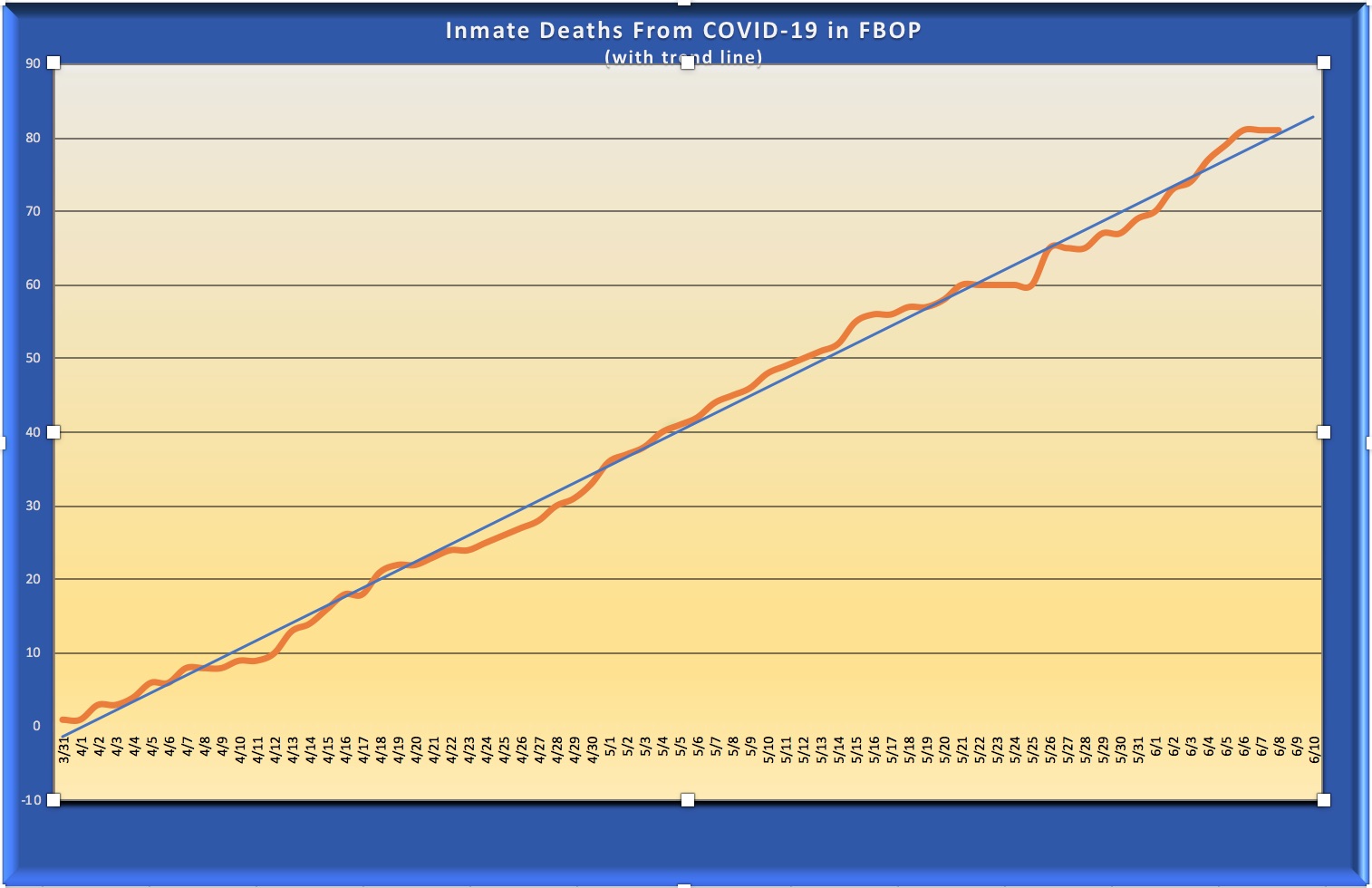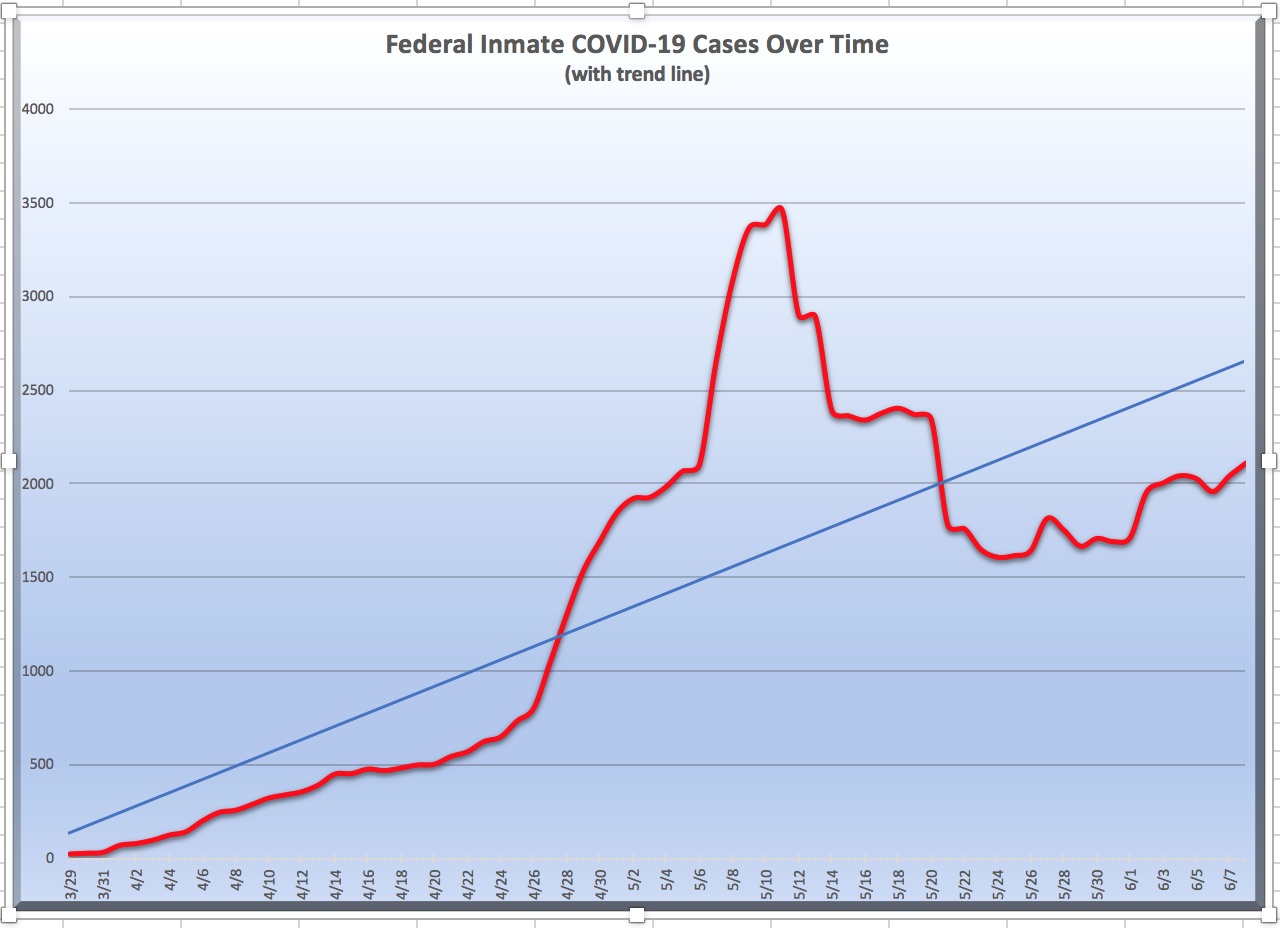We post news and comment on federal criminal justice issues, focused primarily on trial and post-conviction matters, legislative initiatives, and sentencing issues.

LOMPOC COVID CLASS ACTION SUIT SETTLES
 The two-year-old class action lawsuit against the Federal prison complex at Lompac, California, over COVID mismanagement ended last week with a stipulation by the parties that the Federal Bureau of Prisons will transfer eligible inmate class members to CARES Act home confinement in accordance with an earlier preliminary injunction, with substantial weight given to COVID-19 risk factors and without denying anyone based solely on the amount of time served or the nature of a prior offense.
The two-year-old class action lawsuit against the Federal prison complex at Lompac, California, over COVID mismanagement ended last week with a stipulation by the parties that the Federal Bureau of Prisons will transfer eligible inmate class members to CARES Act home confinement in accordance with an earlier preliminary injunction, with substantial weight given to COVID-19 risk factors and without denying anyone based solely on the amount of time served or the nature of a prior offense.
The BOP also agreed to perform daily symptoms checks for people placed in quarantine, screen inmate class members working in communal spaces for COVID-19 symptoms, and ensure that those isolated in the SHU are treated differently from those housed there for punitive reasons, including providing access to clocks, radio, reading materials, personal property, and commissary.
The inmate class lawyers, working pro bono from the LA office of the 340-lawyer firm Manatt, Phelps and Phillips, argued that the nature of overcrowded prison settings prevented social distancing or taking other recommended COVID precautions. They argued the BOP had failed to follow the Attorney General’s order to maximize the release of at-risk individuals to home confinement, thus violating their 8th Amendment rights.
As a result, the lawsuit alleged, the virus spread to 60% of those in custody, over 1,200 people at the overcrowded facility, The suit sought declaratory and injunctive relief for improved conditions of confinement, as well as a writ of habeas corpus for release.
 The Court issued a preliminary injunction in July 2020 requiring the BOP to immediately review a provisional class of people over 50 years old or who had underlying COVID morbidity health conditions for home confinement and to promptly transfer eligible people to their homes. Subsequent orders prohibited the BOP from denying people home confinement based solely on the basis of the amount of time served or the nature of a prior offense. About 250 people have been transferred to CARES Act home confinement from Lompoc since the preliminary injunction was issued.
The Court issued a preliminary injunction in July 2020 requiring the BOP to immediately review a provisional class of people over 50 years old or who had underlying COVID morbidity health conditions for home confinement and to promptly transfer eligible people to their homes. Subsequent orders prohibited the BOP from denying people home confinement based solely on the basis of the amount of time served or the nature of a prior offense. About 250 people have been transferred to CARES Act home confinement from Lompoc since the preliminary injunction was issued.
In a related report, the Santa Barbara Independent reported last week that the estate of Mohamed Yusuf, who was serving the final year of a 132-month sentence at USP Lompoc when he died of COVID-19, is pursuing a wrongful death action against the prison for allegedly allowing him to die of COVID without providing proper medical care.
Yusuf was 37 years old, married with three children, and in “sturdy health” when he tested positive for the coronavirus on May 7, 2020, the lawsuit states. At the time, in the early days of the pandemic, the prison complex was experiencing a massive outbreak that ultimately killed five inmates and infected more than 1,200, more than any other BOP facility. The suit alleges that “while correctional staff knew of the Decedent’s dire need for help, they did not provide prompt and appropriate care and assistance, and some joked about the matter, going so far as to call the Decedent a ‘faker’ and a ‘wimp’.”
 Why does any of this matter? The nation is bracing for another wave of COVID-19 just as a surge in new Omicron subvariants has raised concern among scientists. The Centers for Disease Control and Prevention released data last week showing that BQ.1 and its brother BQ.1.1 now account for over 10% of US cases, while BF.7 accounts for another 5%.
Why does any of this matter? The nation is bracing for another wave of COVID-19 just as a surge in new Omicron subvariants has raised concern among scientists. The Centers for Disease Control and Prevention released data last week showing that BQ.1 and its brother BQ.1.1 now account for over 10% of US cases, while BF.7 accounts for another 5%.
“Within a few weeks, things could look upside down,” according to John Swartzberg, an infectious disease and vaccinology expert at the University of California, Berkeley. If the subvariants keep spreading at the same rate, they could overtake BA.5 as the nation’s most prevalent SARS-CoV-2 strain. Globally, mutations also include contenders such as the Omicron subvariant XBB, which is suspected of being able to evade vaccines.
Just this morning, The New York Times reported that the recent decline in Covid-19 cases across the United States has started to level off. “Coronavirus-related hospitalizations are ticking up in a number of states, including Arizona, Indiana, Illinois, Nevada, Nebraska, Oklahoma, South Dakota and Wisconsin. And there have been a variety of unnerving headlines about the immune evasion and increased transmissibility of the next round of coronavirus subvariants.”
BOP, Lompoc, COVIYesterday, White House chief medical advisor Dr. Anthony Fauci said the COVID deaths, which average more than 2,600 per week, remain too high. At the same time, he said, the new omicron variants are knocking out key tools used to protect the most vulnerable.
As of yesterday, the BOP reported that COVID was present in 70% of its institutions, with 238 inmates and 318 staff ill with the virus.
Order re Joint Motion for Approval of Settlement, ECF 863, Torres v Milusnic, Case No. 2:20cv4450 (C.D.Cal., October 11, 2022)
Manatt, Manatt Secures Settlement in Pro Bono Class Action Lawsuit For Prison Health and Safety (October 25, 2022)
Santa Barbara Independent, Estate of Terrorist Killed by COVID in Lompoc Prison Sues Warden, Staff (October 26, 2022)
National Geographic, Why Omicron subvariants BQ.1 and BQ.1.1 are poised to take over in the U.S. (October 18, 2022)
The New York Times, New Covid Variants Are Circulating. Here’s What to Know. (November 4, 2022)
CNBC, U.S. faces pandemic crossroads with Covid deaths still too high and new omicron variants emerging, Fauci says (November 3, 2022)
– Thomas L. Root





